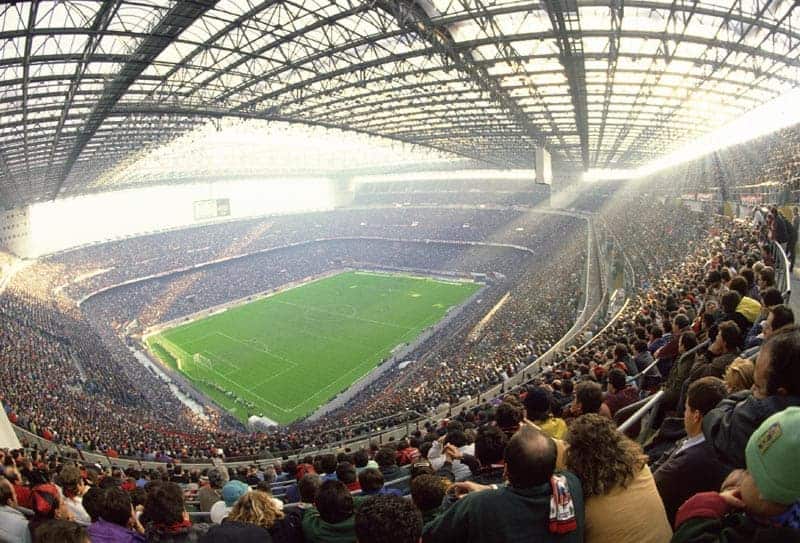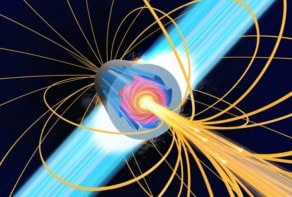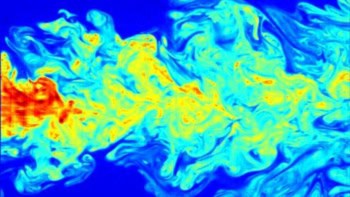
Orderly motion could be restored to a panicked human crowd though the actions of people called “game changers”. That is the conclusion of Ajinkya Kulkami, Sumesh Thampi and Mahesh Panchagnula of the Indian Institute of Technology Madras, who have modelled the emergence of disorder in an orderly moving human crowd.
Even at the best of times, large crowds can be terrifying because the lack of control and helplessness experienced by individuals. But when things go wrong, as they did in the Mina stampede at the 2015 Hajj in Saudi Arabia, many lives can be lost.
As a result, scientists are keen on developing models of crowd behaviour that can be used to understand the causes of crowd crushes and stampedes and try to avoid future disasters.
In this latest work, Panchagnula and colleagues looked at crowd dynamics using a variation of the Vicsek model of active matter. According to Panchagnula, the research is an extension of work that the team had been doing on the mixing of particulate materials. “We wanted to see what would happen to active materials,” he told Physics World.
Human-like characteristics
Their model describes individual members of a group as self-propelled agents that modify the direction of their motion in response to the actions of other members of the group. Each of the 6120 agents had the human-like characteristics of a diameter of 0.5 m and a mass of 60 kg and the group was confined to a circular region with a radius of 22.5 m. This results in a density of agents that is on par with a typical crowd.
Each agent is subject to three different forces: a propulsion force that drives the agent forward; a space exclusion force that prevents agents from getting too close together; and a coordination coefficient that defines how the motion of an agent is affected by the motions of its neighbours. Panchagnula says that the coordination coefficient depends on the “state-of-mind” of an agent with regards to how willing an individual is to follow the crowd. In terms of a physical description, he likens the effect to a shear force between individuals that results in the crowd having a viscosity.
At relatively high values of the coordination coefficient, computer simulations of the model show that the agents organize themselves into an orderly flow that circles round the enclosure — behaviour that is analogous to an orderly crowd. However, if there is a deterioration in the state-of-mind of the agents – caused by dialling down the coordination coefficient – the crowd undergoes a phase transition to a disorderly state in which agents “panic” and move in random directions. To return the crowd to an orderly state, the coordination coordinate must be increased well beyond the value at which the transition to disorder occurred. Called hysteresis, this behaviour is seen in many physical phase transitions – most famously in how a ferromagnet responds to an external magnetic field.
Restoring order
Further investigation revealed that the magnitude of the hysteresis increases with both the number of agents in the crowd and the size of the enclosure. This, according to Panchagnula, suggests that restoring order by simply improving agents’ state-of-mind becomes increasingly difficult as crowds become larger.

I’m a football fan…get me out of here
Fortunately, the team discovered that order can be restored by placing special “game changer” agents at specific points in a disordered crowd. They found that the game changers should be deployed in locations within the enclosure that experience the fastest motion when the crowd is moving in an orderly circular manner. Panchagnula explains that these game changers would move as if in an orderly crowd, which would nucleate an orderly region that would then grow to encompass the entire crowd.
Tamas Vicsek, who developed the eponymous model, describes the research as “interesting” but points out that he is not aware of any experimental observations of game changers restoring order from disorder. He does say, however, that observations have been made of “informed agents” leading groups of fish and even humans.
With regards to deploying game changers in real crowds, Vicsek points out that 612 agents (or 10% of the total crowd) were used in the simulation – which would probably not be practical.
Panchagnula says that the team is now modelling crowds in more complicated enclosures such as a rectangle with an entrance and exit at opposite ends.
The research is described in Physical Review Letters.



